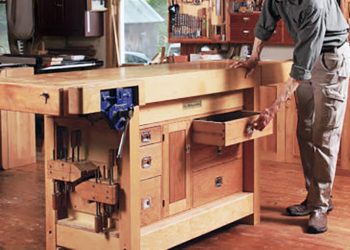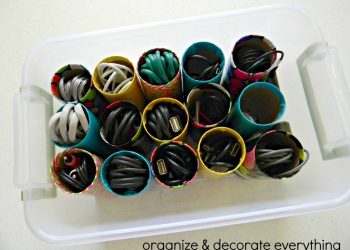Table of Contents
Offices have moved to our homes, with the given situation of the pandemic. And it seems like companies are embracing WFH as if it is here to stay, maybe partially, but it might increase the need to declutter our houses make them more spacious and workable.
The most primary reason to do so is finding the right file at the right time should not be a tedious job; if finding every file would take the time, it would reduce productivity and increase frustration.
Another reason is not to have personal documents mixed with the work documents; we would not want to go deep into how vital some documents can be; know that with without the right documents
So yes, it is essential to keep them safe, and most of us know that and keep them in XXX security. And many times, it happens the documents do not come handy, you cannot find it at the right time, or while finding one single paper, the whole stack gets shuffled.
For many more of such reasons that we do not want to pile you up with, having a file cabinet with an efficient and effective organization category is required. An organized filing system can help and make your work way more comfortable. So much so that you would feel like someone is sharing your workload. And you would not have to worry about losing some document as you would have a track of them.
Knowing all this, we felt a need to share some well-researched and recommended file cabinet organization categories at home that will be the most useful.
Aspects that are Necessary to Understand the Categories
Before we dive into what are the ways, how to do it and all the most fundamental thing to remember is a filing system at home it will be personal and unique to you and will depend on multiple factors, for example, your profession, the current home, and family members, if the property is owned or is on rent or EMI.
Another example of an impacting factor is priorities that will decide which documents are active and inactive. You need active documents on daily bases or often, and unactive are the ones that you rarely need but are important enough to keep; for example- if you don’t travel a lot internationally, your passport is an unactive document. That is why, as mentioned above, the categorization is subjective, depending on various aspects.
Let us get to it,
Take a piece of paper, write down your categories and subcategories, and if you want to write where everything is and keep it in a place where only you and your trusted ones can reach, you can also use it to remember your password. (do so at your own risk, though)
We will extensively brief you with a list of things that people commonly include in a personal filing system.
Remember that everyone has a different list, including ones you need and writing them on paper, as I said above. (Pro tip- Whenever you remove a document from the filing system, take a narrow post it places it on the particular document and write whom you gave or some detail to keep a close track of important things)
These are the Suggested Home File Categories for Organized Filing System
Automobile Documents
- Insurance certificate
- License
- Maintenance and servicing receipts
- Fuel receipts
- Registration certificate
- Pollution certificate
- Commercial validity documents (if it is a commercial vehicle)
Bank Records
- Cheque book
- Credit card/debit card documents
- Passbook/ bank statements
- Loan/trust/deposit documents
- Account information’
- Shares account information
Belongings (appliances and furnishing)
- Bills/ receipts
- Warranties / Guaranties
- User manuals
Business Documents
- Partnership agreement
- Utilities
- Business cards/ brochures/ certificates
- Licenses
- Insurance
Citizenship Documents
Children
- Achievement certificates
- Birth certificate / adoption documents
- School report cards
Educational
- Report cards
- Certificates
- Degree / diploma
- Resume
- Leaving certificate
Employment Records
- Employment contracts
- Offer letters
- Recommendation letters
- Social security records
- Pension plans
Financial Records
- Monthly expense Bills/ receipts
- Net worth statement
- Unpaid bills
- Credit card and debit card info
Health
- Insurance
- Reports
- Records
- Prescriptions
Housing
- Ownership agreement
- Rent agreement
- Repair- servicing receipts
- House plans (designs, electric plans, plumbing plans)
- Insurance
- EMI payments/ rent payments
Income Tax
- Records
- Current year documents
- Previous returns
Investments
- Bonds/ trusts/ stocks
- Real estate investment records
- Retirement plans
- Other
Personal Records
- Birth certificate
- Marriage/ divorce certificate
- Memberships
- Will
- Passport
- Medical records (medical history)
- Life Insurance
- Donations
- Family lineage
- Memories
Pets
- Adoption document
- Medical records
- Prescriptions
We hope we covered most of it. Categorial data might have been repeated at places of overlap. It would help if you went with the one that best suits you before proceeding with the list cross check if you are missing out anything. Not all filing systems have hanging file folders; you can use a file box, a drawer, or shelf in the closet you feel is safe (also dry and cold).
This includes most of the categories except exceptional data; this list fits in suggested home File categories for an organized filing system. This is a weekend job; it might feel a lot to do but take it to step by step.
“Until you finish the task at hand completely, don’t proceed to the next one,” says a famous organizational consultant, which we agree to because it might pile up and be too much to handle later. Do not overthink it and start working without worry. Because doing work while worrying feels double the work.
Hacks to Maintain your Filing System
This can also be called “how can I make my life easier” these hacks indeed do 😉
Keep a box with three compartments that are easily accessible in your house. Label it in three categories, for example, Review immediately, might need later, do not need it. You can make a pile of them, do not need documents, and give for recycling; your efforts make a difference to the environment, remember that.
Make it a habit to segregate documents as soon as they come in, like checking voice mail as soon as you enter the home. This will make things easier for you, and you no longer will have to make time for this as such.
Keep a habit of labeling and writing on the documents to remember essential things. If you are handed a business card, note the date, the occasion, and its significance when you get home.
Keeping track of documents in real-time with physical documents is a bit of time taking. Many other essential reasons companies and people are going paperless for documentation.
We would recommend scanning and uploading essential documents on a safe and secured cloud or a government-approved digital locker—documents like birth certificate, license, green card, pan card, and so on. Even a license in a digital locker is accepted nowadays in many countries.
(Due to apparent reasons, such accounts’ passwords should not be safe, and a local third-party app with no authorization or proper security should not be used to keep your documents. Such doing can be risky and harmful if, in doubt of any hacking, it should be reported immediately.)
Like you keep a laundry basket, keep a scanning basket and keep documents you need to scan and store on daily bases.
These hacks are the way to go about to have a perfectly organized home filing system.
And on that note, we would like to wrap up this mini-guide on file cabinet organization categories at home. We hope you find it useful and not too much trouble while trying it in real.
While this is an essential part of decluttering and if you like this article and are on clean up the house mission, read our article on cable and cord storage organization tips and another one on clothes storage.
As mentioned above about digital documentation, if you want an article about digital documents organization, please let us know. We hope we made a positive contribution is suggesting appropriate and efficient Home file categories for an organized filing system.
Happy organization!!







